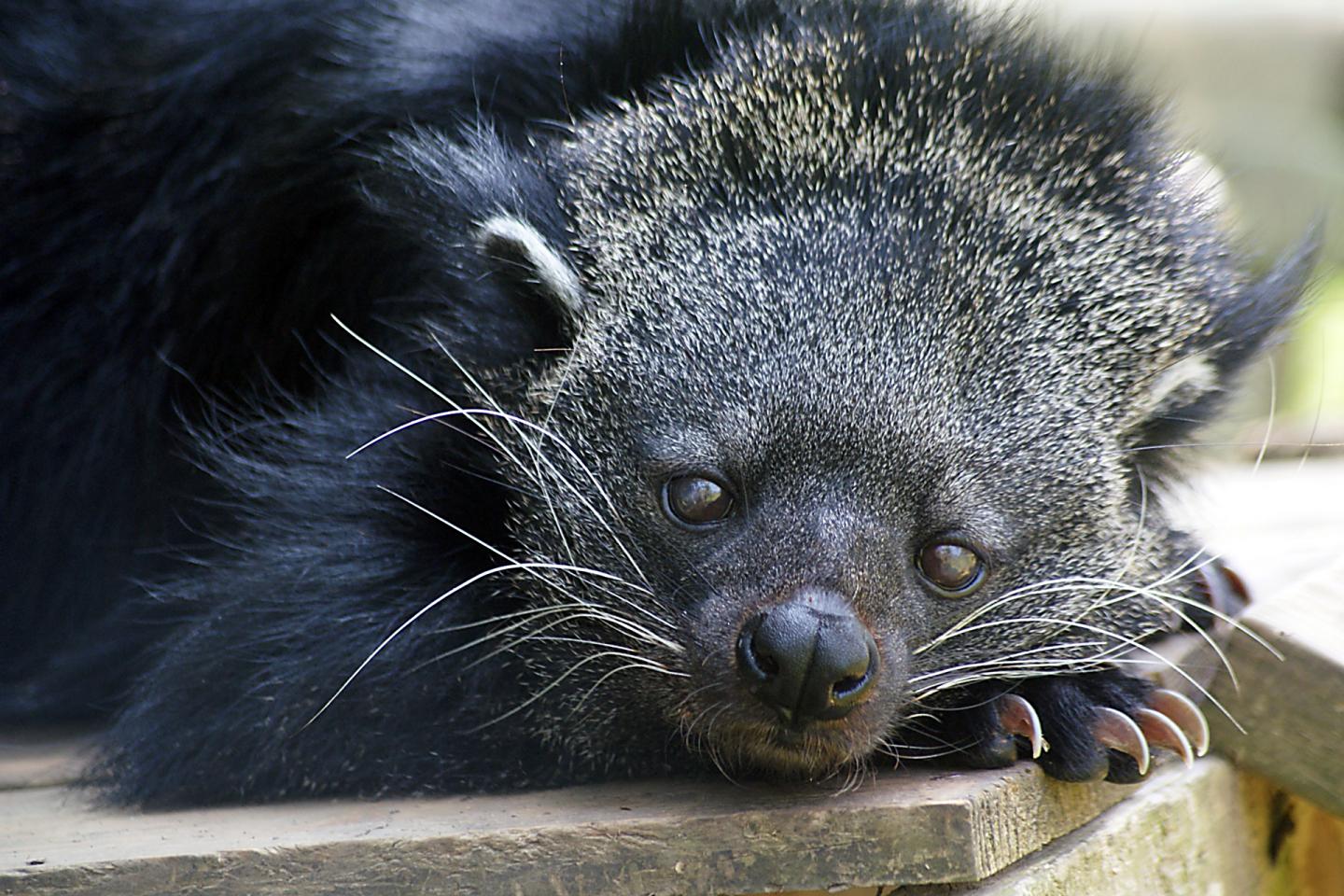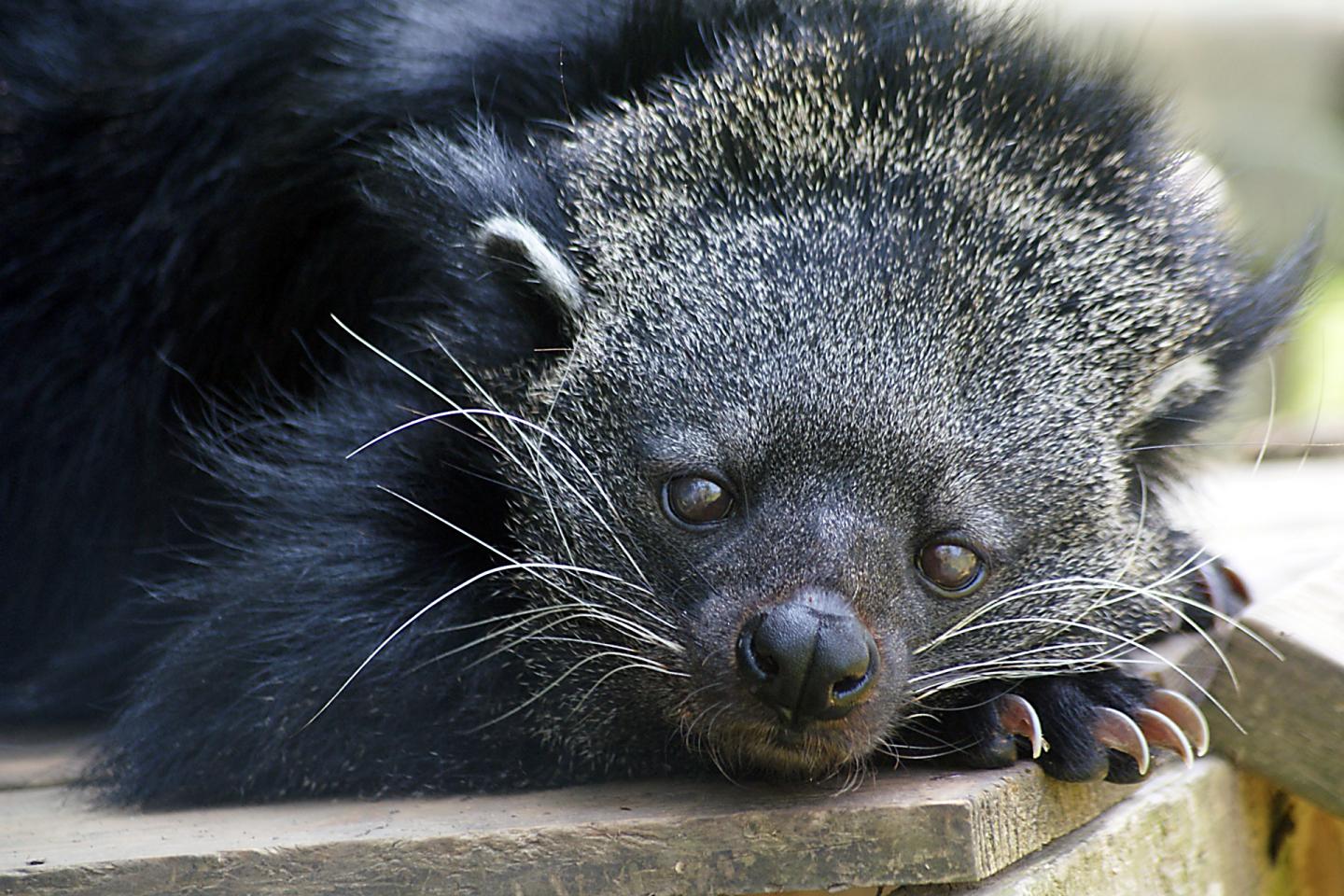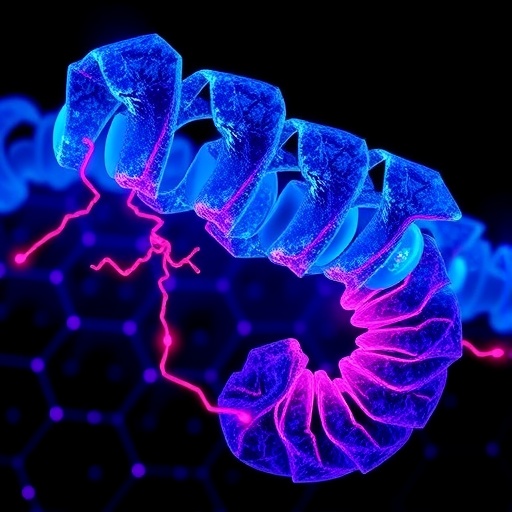
Credit: Photo courtesy of Carolina Tiger Rescue
DURHAM, N.C. — The bearcat. The binturong. Whatever you call this shy, shaggy-haired creature from Southeast Asia, many people who have met one notice the same thing: it smells like a movie theater snack bar.
Most describe it as hot buttered popcorn. And for good reason — the chemical compound that gives freshly made popcorn its mouthwatering smell is also the major aroma emitted by binturong pee, finds a new study.
Most people have never heard of a binturong, let alone caught a whiff of one up close. But for many zookeepers, the smell wafting from the binturong enclosure is so striking that they name their resident binturongs after the popular snack.
Solitary animals that rarely come face to face, binturongs use their roasty, popcorn-like aroma as a calling card to say "this is my turf" and find potential mates.
Previous studies searched for compounds in secretions from the scent glands under the binturong's tail that could explain its signature scent, but nothing turned up.
In a paper appearing online in the journal The Science of Nature – Naturwissenschaften, researchers analyzed urine samples collected during routine physical examinations of 33 binturongs at Carolina Tiger Rescue, a nonprofit wildlife sanctuary in Pittsboro, North Carolina.
Binturongs pee in a squatting position, soaking their feet and bushy tails in the process. They also drag their tails as they move about in the trees, leaving a scent trail on the branches and leaves behind them.
Using a technique called gas chromatography-mass spectrometry, the researchers identified 29 chemical compounds in the animals' urine. The one compound that emanated from every sample was 2-acetyl-1-pyrroline, or 2-AP — the same compound that gives popcorn its tantalizing scent.
What's more, 2-AP was among the few compounds that lingered and became more dominant over time, a fact the researchers discovered when a rush airmail shipment of frozen binturong urine was delayed on a hot tarmac en route to co-author Thomas Goodwin of Hendrix College in Arkansas for analysis.
Males secrete more 2-AP than females. "The fact that the compound was in every binturong we studied, and at relatively high concentrations, means it could be a signal that says, 'A binturong was here,' and whether it was male or female," said first author Lydia Greene, a graduate student at Duke University.
The compound 2-AP normally forms in popcorn during the popping process, when heat kicks off reactions between sugars and amino acids in the corn kernels. The cooking produces a variety of new odor and flavor molecules in a chemical reaction called the Maillard reaction. The same compound is also responsible for the comforting aromas of toasted bread and cooked rice.
The question was: how do they do it? "If you were to make this compound, you would have to use temperatures above what most animals can achieve physiologically," said Christine Drea, a professor of evolutionary anthropology at Duke who led the study. "How does this animal make a cooking smell, but without cooking?"
It could be that binturong pee smells funny because of something they eat. The team searched for 2-AP in the binturongs' kibble, the one cooked item in their diet, but they didn't detect any.
A more likely explanation, the researchers say, is that 2-AP is produced when binturong urine comes in contact with bacteria and other microorganisms that live on the animal's skin or fur or in its gut.
Bacteria make smelly compounds as they break down sweat in our armpits in much the same way, Drea said.
The time-release action of the microbes could help the binturongs' urine smell-o-grams last long after the animals move on, an essential mode of communication for solitary animals that rarely encounter each other, the researchers say.
###
This research was supported by Duke, Hendrix College, and a grant from the National Science Foundation (IOS-1021633). Other authors include Tim Wallen of the Centers for Disease Control and Prevention and Anneke Moresco of the Cincinnati Zoo.
CITATION: "Reproductive Endocrine Patterns and Volatile Urinary Compounds of Arctictis Binturong: Discovering Why Bearcats Smell Like Popcorn," Lydia Greene, Timothy Wallen, Anneke Moresco, Thomas Goodwin and Christine Drea. The Science of Nature – Naturwissenschaften, April 7, 2016. DOI: 10.1007/s00114-016-1361-4
Media Contact
Robin Smith
[email protected]
919-681-8057
@DukeU
http://www.duke.edu





